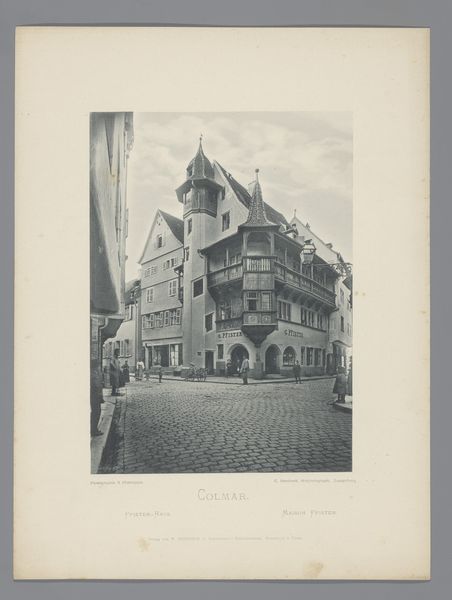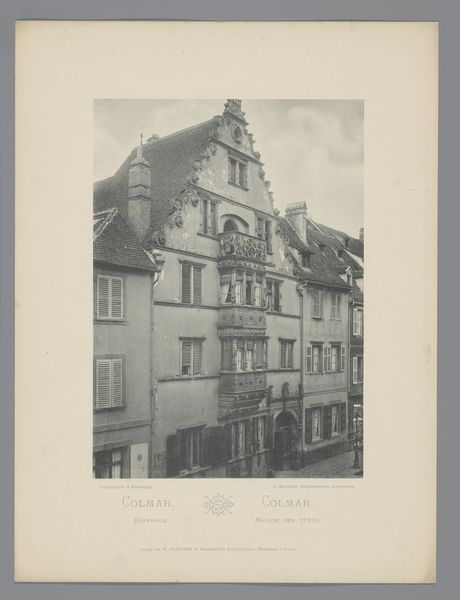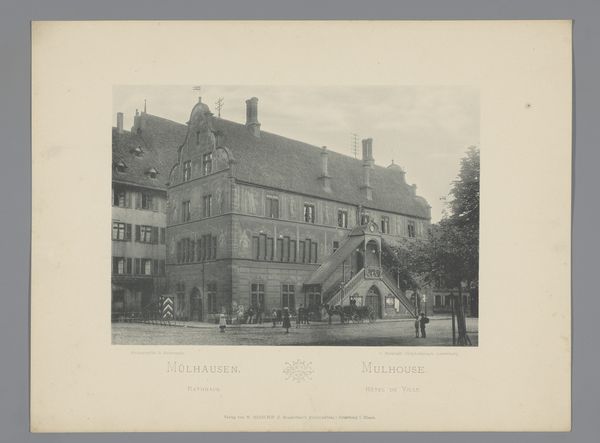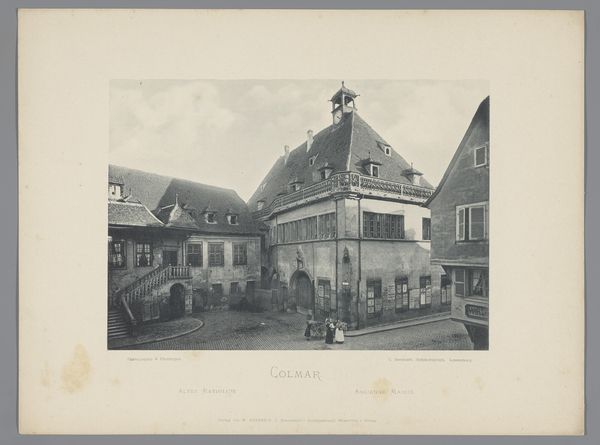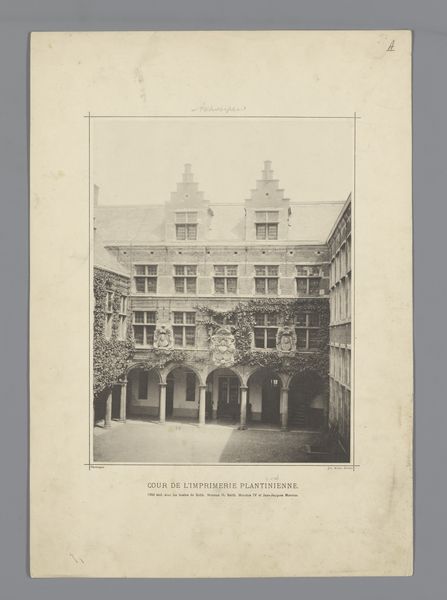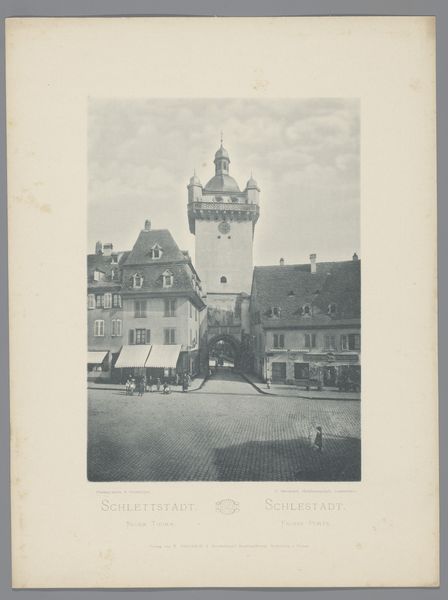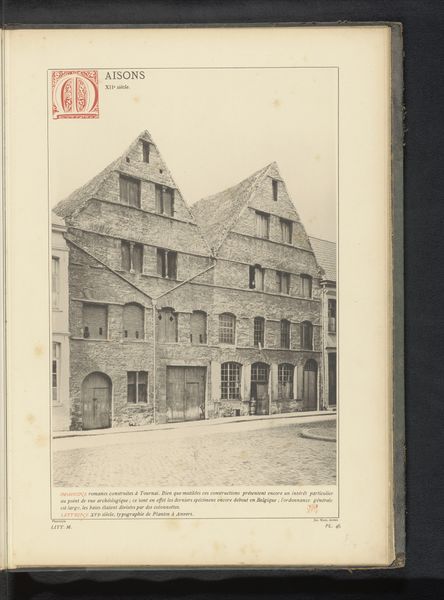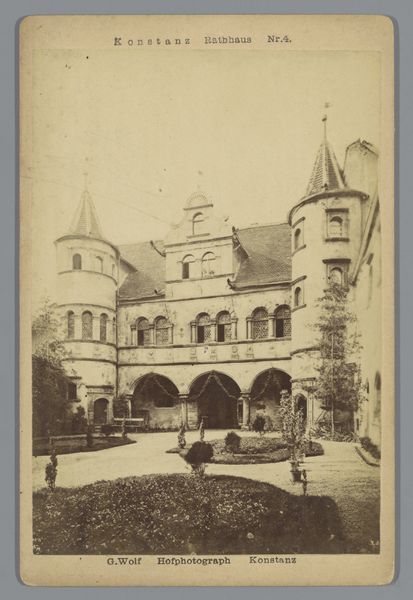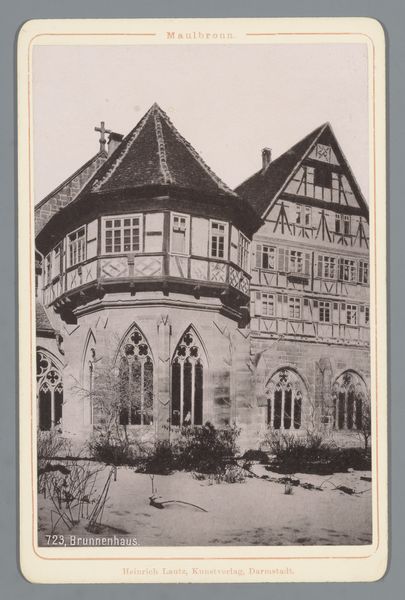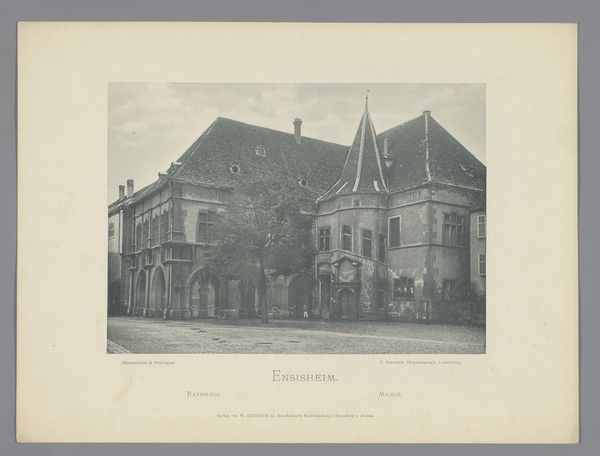
print, photography
# print
#
landscape
#
photography
#
cityscape
#
realism
Dimensions: height 215 mm, width 153 mm
Copyright: Rijks Museum: Open Domain
Curator: This is "Gezicht op de Fruchthalle te Obernai," a photograph by Charles Bernhoeft taken before 1894. Editor: It strikes me as stark, almost melancholic. The tonal range is limited, and the building looms with a powerful vertical presence, yet the cobbled street is slicked by emptiness, damp. What material process brought that to light? Curator: Bernhoeft, known for portraiture, captured this cityscape, utilizing printmaking techniques alongside photography, enabling widespread consumption of this representation of the public space. This points to the increasing accessibility of both art and travel. The cobblestones have surely endured centuries of labour. How is this embedded in wider political narratives, as public space? Editor: Absolutely. Consider the Fruchthalle's function: a marketplace. Who owned it, who traded there, who profited? This building is stone and timber—materials extracted, shaped, assembled. Those arched portals suggest the controlled flow of goods and people. Realism of this type is intertwined with both labour and a certain controlled reality. It is always a window. What kind of realism does this represent, exactly? Curator: The building's solidity presents the ideals of permanence and order; in a time of immense social and political upheaval, realism offered a connection to established structures. However, this representation might erase other experiences - the labourer, the vendor. There are so many unseen hands implicit in the Hall's establishment. Editor: Precisely, unseen labour, like so much architecture throughout history. It invites deeper questions, doesn't it, regarding power, representation, and the hidden histories etched into physical structures? Curator: Yes, by centering our analysis around identity and class within its creation, function, and representation, we move closer to a thorough critique. Editor: Ultimately, the photograph prompts us to consider the layers of extraction, construction, and lived experiences intertwined within that single architectural photograph. Curator: It invites reflection, too, on the construction of cultural memory. A seemingly simple city portrait speaks volumes, really, of our entangled past.
Comments
No comments
Be the first to comment and join the conversation on the ultimate creative platform.
